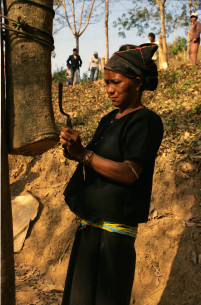Financing Dispossession China’s Opium Substitution Programme in Northern Burma
China’s opium crop substitution programme has very little to do with providing mechanisms to decrease reliance on poppy cultivation or provide alternative livelihoods for ex-poppy growers. Financing dispossession is not development.
Order print copy

Authors
A hard copy of the report is available for purchase in our web shop.
Three main and interconnected developments are simultaneously taking place in Shan State and Kachin State: (1) the increase in opium cultivation in Burma since 2006 after a decade of steady decline; (2) the increase at about the same time in Chinese agricultural investments in northern Burma under China’s opium substitution programme, especially in rubber; and (3) the related increase in dispossession of local communities’ land and livelihoods in Burma’s northern borderlands.
The vast majority of the opium and heroin on the Chinese market originates from northern Burma. Apart from attempting to address domestic consumption problems, the Chinese government also has created a poppy substitution development programme, and has been actively promoting Chinese companies to take part, offering subsidies, tax waivers, and import quotas for Chinese companies. The main benefits of these programmes do not go to (ex-)poppy growing communities, but to Chinese businessmen and local authorities, and have further marginalised these communities.
Land tenure and other related resource management issues are vital ingredients for local communities to build licit and sustainable
livelihoods. Investment-induced land dispossession has wide implications for drug production and trade, as well as border stability. Investments related to opium substitution should be carried out in a more sustainable, transparent, accountable and equitable fashion. Customary land rights and institutions should be respected. Chinese investors should use a smallholder plantation model instead of confiscating farmers land as a concession.
Pages: 92
